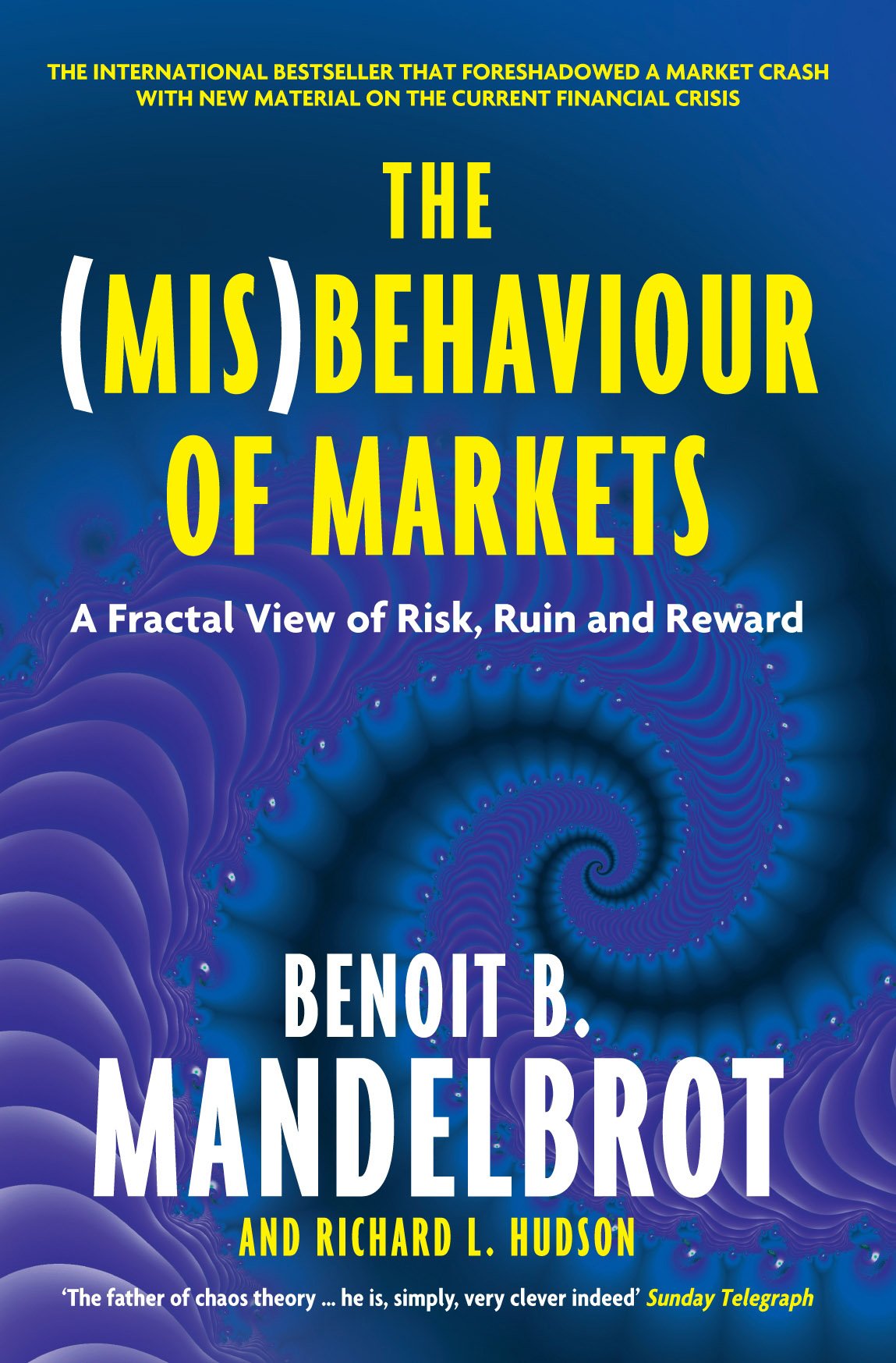The (Mis)Behaviour of Markets Summary

5 min read ⌚
 A Fractal View of Risk, Ruin, and Reward
A Fractal View of Risk, Ruin, and Reward
Please fasten your seatbelts, because we’re taking off.
Who Should Read “The (Mis)Behaviour of Markets”? And Why?
Some aspects of the book will not be unknown to most financial experts, but even common information is stated interestingly. Mandelbrot’s most crucial financial work was in the 60s. However, his theories about leptokurtosis and fractals have gotten a considerable amount of attention in trading rooms and insignificant colleges.
Along these lines, maybe, it is merely a matter of telling a compelling story, which this book presents Mandelbrot as a lone, clear-thinking prophet battling against a visually impaired and antagonistic economic doctrine.
The authors have spun a fantastic adventure about familiar things, explained in a new way. We recommend “The (Mis)Behaviour of Markets” to finance professionals and business writers and journalists.
About Benoit Mandelbrot & Richard L. Hudson
 Benoit Mandelbrot is a Professor of Mathematical Sciences at Yale University and a Fellow Emeritus at IBM’s Thomas J. Watson Laboratory. He has invented fractal geometry. Richard L. Hudson was a former editor of The Wall Street Journal’s European edition.
Benoit Mandelbrot is a Professor of Mathematical Sciences at Yale University and a Fellow Emeritus at IBM’s Thomas J. Watson Laboratory. He has invented fractal geometry. Richard L. Hudson was a former editor of The Wall Street Journal’s European edition.
“The (Mis)Behaviour of Markets Summary”
Benoit Mandelbrot had a rough childhood. He first tells the story of his father, and how he, as a prisoner in France during the WWII, managed to escape his demise. Mandelbrot also presents how these past situations link to not so distant events, connected to his profession.
To be more precise, his past has made him so intuitive, that he could see relations between things that everyone else saw as unrelated. For example, he could easily compare the floods of the Nile River with the stock-prices on Wall Street.
As a young fellow, Mandelbrot decided to drop out of the elite Ecole Normale Superiore and enlisted into the Ecole Polytechnique. He then continued his education at the California Institute of Technology, at the Massachusetts Institute of Technology and the Institute for Advanced Study in Princeton.
At last, he ended up working at IBM Research. That job was quite atypical for an academic of Mandelbrot’s family. However, that was not the only “atypical” thing he did. Additionally, he took an interest in researching business sectors, the appropriation of wealth, stock markets, bubbles, cotton prices and other monetary phenomena.
An interesting fact about Mandelbrot is that he was anything but conventional. The widely acknowledged doctrine about finance exhibits a pretty much discerning, precise, stable assortment of thought and practice. Mandelbrot’s work debilitated this establishment of the train and proposed what he calls “Ten Heresies of Finance.”
First: Markets are untamed seas, and just like deep waters, they are turbulent: some days, prices do not change, and at different times, they bounce like crazy.
Second: Financial theories are not able to capture the full scope of market risk.
Third: Market timing makes sense – Mandelbrot’s study shows that market moves tend to group and that a couple of large up and down movements are at fault for most profits and losses.
Fourth: Prices do not move gradually and consistently, on the contrary, they frequently jump. Hence, markets are much riskier than one can assume.
Fifth: Market time expands, and contracts and prices mount with time.
Sixth: All markets are the same.
Seventh: Bubbles will continue to happen.
Eighth: Markets delude. People like seeing patterns. However, patterns do not exist.
Ninth: Volatility is simpler to anticipate than prices. Efforts are underway to forecast volatility the way meteorologists predict the weather.
Tenth: Value is not the most important in financial markets.
Key Lessons from “The Misbehaviour of Markets”
1. The Legs of the Contemporary Financial Doctrine
2. Weaknesses of the Three-Legged-Model
3. The Multifractal Model
The Legs of the Contemporary Financial Doctrine
Risk analysis as a need for financial market analysis in the 1960s, based on the work of a French mathematician Louis Bachelier. He studied costs on the Paris Bourse amid the twentieth century and realized that prices changed randomly, and therefore could not be predicted.
However, he concluded that he could analyze them by calculating a mathematical probability. Expanding Bachelier’s work, the economist Fama presented the Efficient Markets Hypothesis (the first leg), which, in simple words, states that it is practically impossible to “beat” the market.
The second leg originated from Markowitz, who connected statistics to creating efficient portfolios, that would have the best return to risk ratio. The third leg originated from Sharpe, whose Capital Asset Pricing Model simplified Markowitz’s computations by expressing a stock’s risk level by a single variable (beta).
Weaknesses of the Three-Legged-Model
These economists did not propose a model without value, but it has some notable shortcomings.
In any case, when pundits pointed at these weaknesses, defendants of the model only invented different patches. Rather than giving the actualities a chance to guide them toward multifractal showcase investigation, scholars and practitioners fixed their old, deficient doctrine with statistical techniques by the name of Generalized Auto-Regressive Conditional Heteroskedasticity (GARCH).
Because of financial specialists’ dependence upon out of date and weak hypotheses and patches, the world has approached financial fiasco at various events in recent years.
The Multifractal Model
You cannot be sure you understand something until you can explain it in simple words. Similarly, the best science finds the least complicated clarification for the vastest scope of phenomena.
The financial world does not need new “fixes.” Instead, it needs a new model: multifractal model.
A fractal is a pattern that rehashes itself in bigger or smaller scale. Fractal math offers conceiving better tools for developing superior portfolios, conducting investment analysis, and better alternative valuation models.
Like this summary? We’d Like to invite you to download our free 12 min app, for more amazing summaries and audiobooks.
“The (Mis)Behaviour of Markets” Quotes
For a complex natural shape, dimension is relative. It varies with the observer. The same object can have more than one dimension, depending on how you measure it and what you want to do with it. And dimension need not be a whole number;… Share on X In economics, there can never be a theory of everything. But I believe each attempt comes closer to a proper understanding of how markets behave. Share on X Society was not a social pyramid with the proportion of rich to poor sloping gently from one class to the next. Instead, it was more of a social arrow- very fat at the bottom where the mass of men live, and very thing at the top where sit… Share on X But his observations of two forms of wildness remain: abrupt change, and almost-trends. These are the two basic facts of a financial market, the facts that any model must accommodate. Share on X If you can distill the essence of GE's stock behavior over the past twenty years, then you can apply it to financial engineering. You can estimate the risk of holding the stock over the next twenty years. You can estimate how many shares… Share on XOur Critical Review
Finance is not an easy subject, and not many readers get excited by reading about it. However, co-authors Mandelbrot and Hudson, have written a book that talks about math, packed in compelling characters and dramatic situations.








